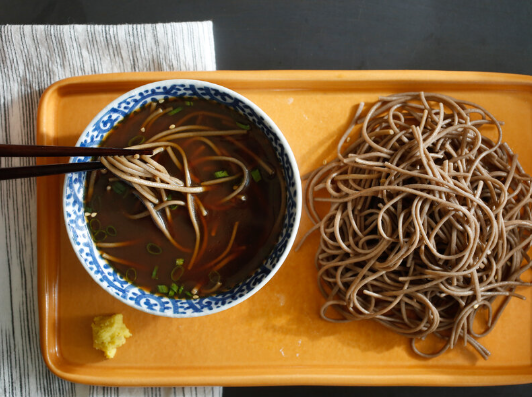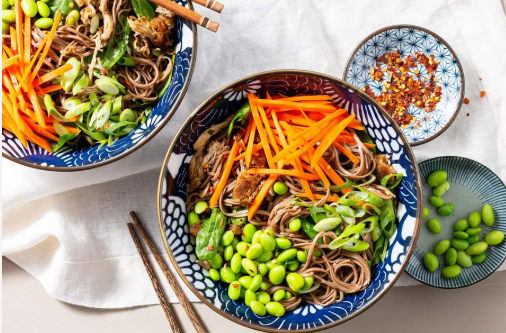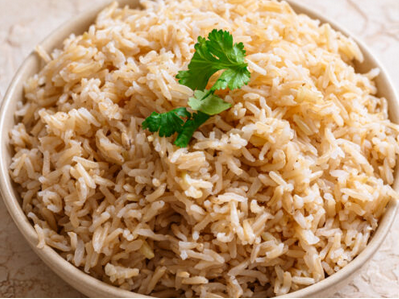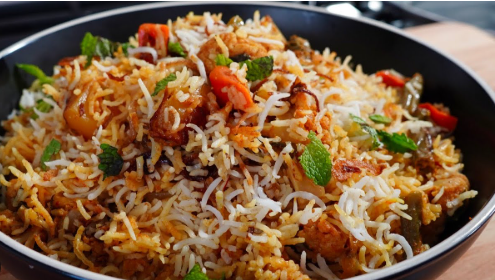Introduction
If you love Japanese cuisine, you’ve probably come across soba noodles thin, earthy noodles made from buckwheat flour. They’re light, healthy, and incredibly versatile. Whether you serve them hot in a comforting broth or cold with a dipping sauce, knowing how to cook soba noodles properly makes all the difference between a sticky mess and a restaurant-quality meal.
Many beginners overcook or forget to rinse soba properly, which can ruin its delicate texture. But don’t worry this guide will show you the right way to boil, rinse, and serve soba noodles so they turn out perfect every time.
What Are Soba Noodles?
Soba noodles are traditional Japanese noodles made primarily from buckwheat flour. They have a nutty flavor and a firm, slightly chewy texture. Depending on the brand, soba may contain a mix of wheat and buckwheat — the higher the buckwheat ratio, the darker and nuttier the noodles taste.
Soba is packed with nutrients like protein, fiber, and minerals, making it a healthier alternative to regular pasta. Plus, it’s naturally gluten-free if made entirely from buckwheat.
Ingredients You’ll Need

- 200g soba noodles (dried)
- Water (plenty for boiling)
- 1 teaspoon salt (optional)
- Ice cubes (for cooling)
That’s it! The beauty of soba lies in its simplicity — all you need is proper technique.
Step-by-Step: How to Cook Soba Noodles
Step 1: Boil the Water Generously
Bring a large pot of water to a full rolling boil. Soba noodles need enough space to move freely while cooking, so use at least 4–5 liters of water per 200g of noodles.
Step 2: Add the Soba Noodles
Once the water is boiling, gently add the soba noodles. Stir immediately with chopsticks or tongs to prevent sticking.
Step 3: Cook for 5–7 Minutes
Cook the noodles according to the package instructions (usually 5–7 minutes). Keep checking their texture — they should be firm yet tender (al dente). Avoid overcooking; soba softens quickly.
Step 4: Drain Immediately
Once cooked, drain the noodles in a colander. Don’t let them sit in hot water — they’ll continue cooking and become mushy.
Step 5: Rinse Under Cold Water
This step is crucial. Rinse the noodles thoroughly under cold running water while gently rubbing them with your hands. This removes excess starch, which makes the noodles sticky.
Step 6: Chill (Optional)
For cold soba dishes, place the noodles in a bowl of ice water for 1–2 minutes. This firms up the texture and gives them a refreshing bite.
Step 7: Serve and Enjoy
Drain the noodles once more and serve with your favorite toppings or dipping sauces.
Read also:–How to Cook Pasta in the Microwave: 5 Powerful Tips for Quick, Easy, and Delicious Results
Serving Ideas for Soba Noodles

- Cold Soba (Zaru Soba):
Serve chilled noodles on a bamboo mat with a soy-based dipping sauce (tsuyu) and garnishes like green onions, nori, and wasabi. - Hot Soba Soup:
Add the noodles to a warm broth with vegetables, tofu, or tempura. Perfect for winter comfort food. - Soba Salad:
Mix soba with sesame dressing, cucumbers, carrots, and edamame for a light and healthy lunch. - Stir-Fried Soba:
Cook soba with veggies and a splash of soy sauce for a quick Asian-style stir fry.
Tips for Perfect Soba Noodles
- Use plenty of water: Like pasta, soba needs space to move freely while boiling.
- Do not salt the water too much: Buckwheat noodles absorb salt easily.
- Rinse thoroughly: Washing removes starch and prevents clumping.
- Do not overcook: A minute too long can ruin the texture.
- Serve immediately: Soba noodles are best fresh and slightly firm.
Health Benefits of Soba Noodles
- Rich in fiber: Keeps your digestion healthy.
- Gluten-free (pure soba): Great for gluten-sensitive diets.
- Low in calories: Ideal for weight-conscious meals.
- High in protein and amino acids: Supports muscle and energy levels.
Soba is one of Japan’s favorite comfort foods — satisfying yet light, making it a great option for both summer and winter.
FAQs About Cooking Soba Noodles
Q1: Why do my soba noodles stick together?
They probably weren’t rinsed properly. Always wash them under cold water right after draining to remove starch.
Q2: Can I reheat soba noodles?
Yes, but it’s best to do so briefly in hot water, not in a microwave, to avoid overcooking.
Q3: How can I tell if soba noodles are cooked?
Taste one — it should be soft but slightly firm in the center (not mushy).
Q4: Can I cook soba noodles in advance?
You can, but rinse and chill them immediately. Store in the fridge for up to 24 hours.
Q5: Are soba noodles healthy?
Absolutely. They’re high in fiber, protein, and antioxidants while being low in fat and calories.
Conclusion
Learning how to cook soba noodles properly can completely transform your Japanese meals. With just a few ingredients and simple steps, you can enjoy perfectly cooked soba that’s chewy, light, and flavorful. Whether served cold with dipping sauce or in a hot soup, soba brings authentic Japanese flavor right to your table.
Once you master the technique, you’ll realize great soba is all about balance, freshness, and simplicity.

